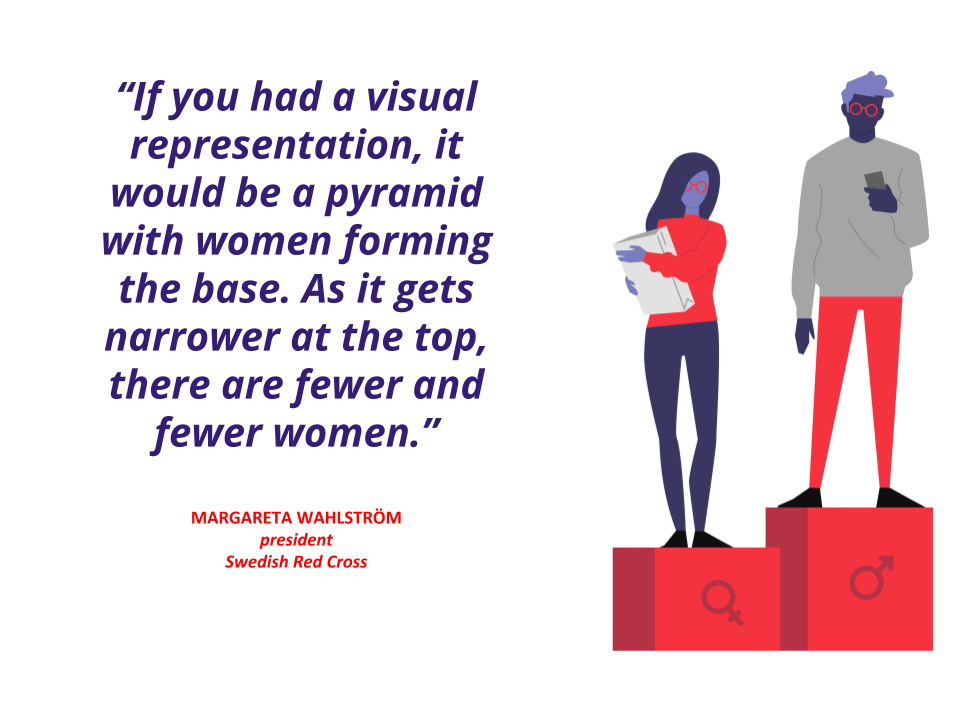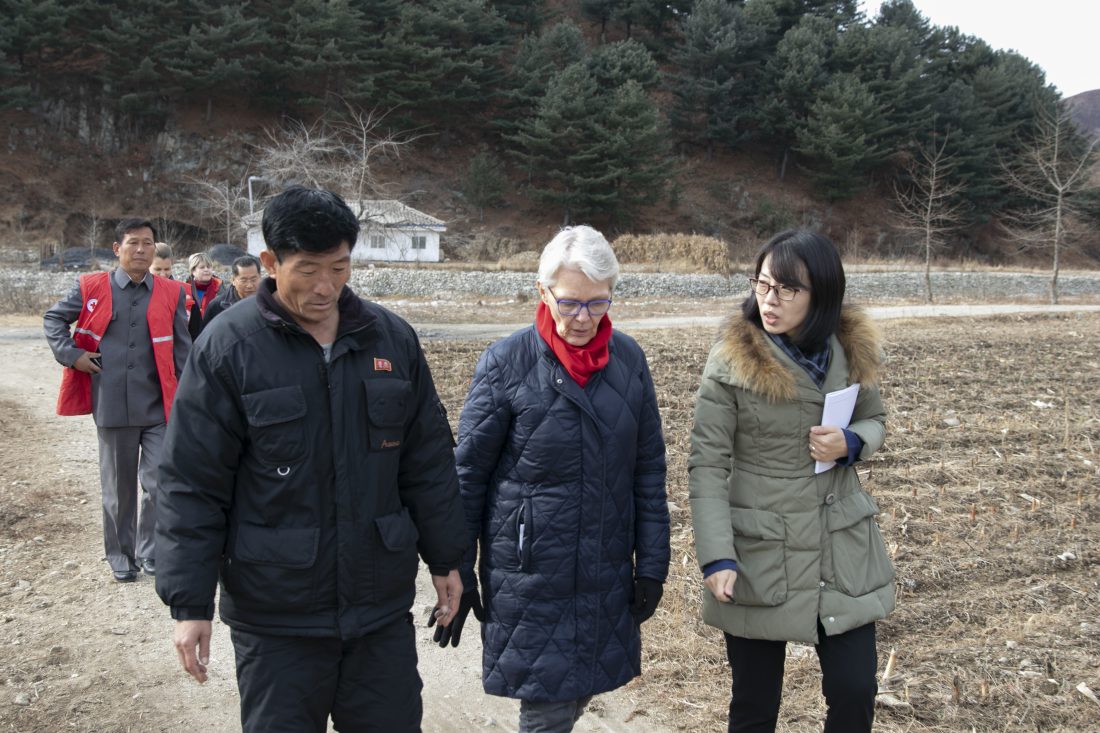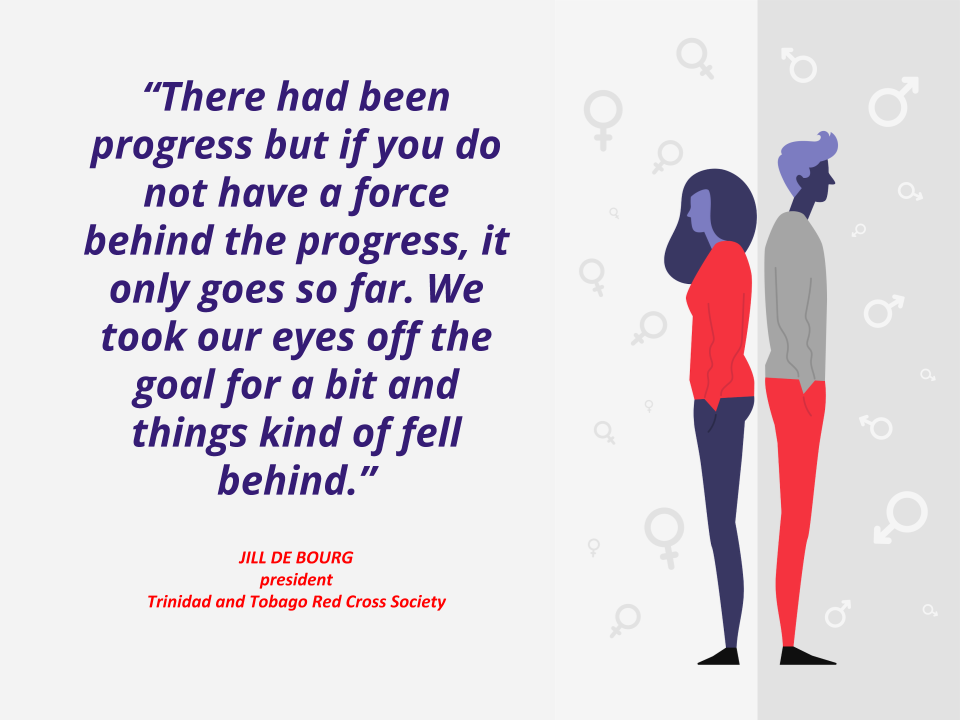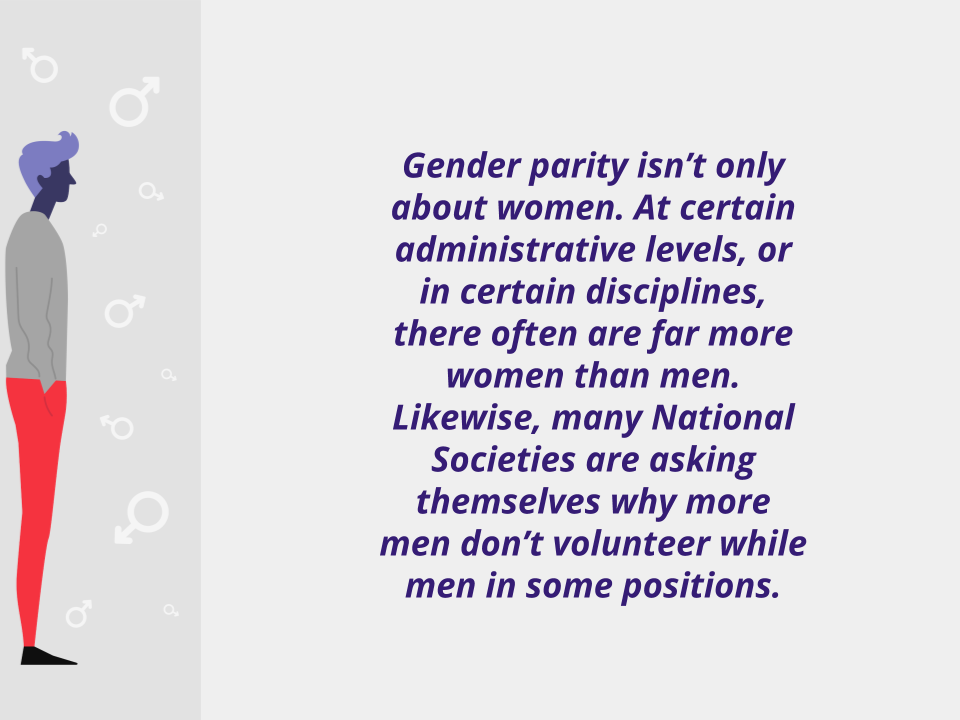The network’s mission: keep up the pressure for change while also strengthening “the pipeline of future women leaders, enabling and supporting high-potential women from staff and volunteers for leadership positions beyond 2021”. So far, 73 National Societies are represented in the network.
Inspired in part by the network’s activism, many National Societies and some IFRC regions are already taking action, setting new targets for gender parity. In November 2018, at a conference in Manila in the Philippines, Red Cross and Red Crescent leaders from across Asia, the Pacific and the Middle East committed to seeing that by 2022 “at least 50 per cent of the elected and appointed leadership of the National Societies and IFRC governance are women”.
The ICRC, which employs more than 18,000 people worldwide, is pushing for a similar transformation. So far, it has had the most success at the top level, where four of seven executive director positions are held by women. Now it has adopted a target of reaching gender parity among all managers by 2022. Today, women make up 40 per cent of middle management (40 per cent) and 30 percent of all staff positions.
These numbers reflect an increase since 2006, when the ICRC first adopted its Gender Equality Policy. Since then, the percentage of women in field management positions grew from 19 per cent to 37 per cent and from the same level to an overall of 48 percent of women among managers at headquarters (with a concentration of women in junior management positions).
This progress is partly based policy changes in recent years that allow greater flexibility (i.e. distance working and a maternity leave policy that allows women to transition back to full time by work 80 per cent with full pay until the child is 1 year old. One of the challenges now is building the base of women national staff (employees from the countries impacted by conflict) in operational positions in the field.
“We have to make sure that in every possible context we create an environment in which both women and their communities feel comfortable with women taking on these roles,” says Patricia Danzi, the ICRC’s director of operations for Africa. “It’s a real challenge. At this point, we can’t really talk about parity in national staff. We are not there yet. But the delegations are aware of it and are being asked to find solutions.”
The next step, she says, would be to ensure that both women and men resident field staff have a path to higher management and leadership so that their voices, experiences, cultural knowledge and background can inform key strategic and operational decisions.
 Red Cross Red Crescent magazine
Red Cross Red Crescent magazine 










 Tech & Innovation
Tech & Innovation Climate Change
Climate Change Volunteers
Volunteers Health
Health Migration
Migration